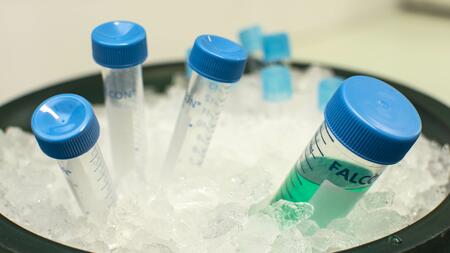Enabling adoptive T cell transfer from seronegative individuals
Temporary loss of T cell immunity towards various virus infections (e.g. Cytomegalovirus (CMV), Epstein Barr Virus (EBV) or Adenovirus (AdV)) is a main cause of infection-related mortality in severely immunocompromised patients, like individuals upon allogeneic hematopoetic stem cell transplantation (HSCT). Adoptive transfer of virus-specific T cells (ACT) from seropositive HSCT donors has demonstrated to be an effective therapeutic strategy. In case of seronegative donors, options for adoptive T cell therapy with long-term persisting T cell maintenance are limited. Therefore, we will identify virus-specific T cell receptors (TCRs) from healthy (virus controlling) individuals or from patients who successfully responded to ACT from seropositive donors, in order to express these TCRs via Crispr/Cas9-mediated knock-in in autologous patient-derived central memory T cells. The ultimate goal is to extend current treatment options for patients with infectious complications upon aHSCT from seropositive donors to seronegative donors. Furthermore this project paves the way for various, novel ACT approaches with CRISPR/Cas9-mediated genetically-engineered T cells.
Allogeneic stem cell transplantation (aHSCT) and solid organ transplantation (SOT) are curative treatments for a variety of diseases. However, viral infections such as CMV, EBV and AdV are major unsolved problems for these patients. Refractory viral infections cause life-threatening conditions due to deficient T cell responses post transplantation. Protective T cell immunity could be restored by adoptive T cell transfer. We and others have demonstrated over the past years that seropositive individuals can be successfully treated with high affinity memory T cells selected from peripheral blood inhigh purities. However, seronegative individuals or recipients of HSCT from a seronegative donor have the highest risk of virus-related mortality, and pathogen-specific T cells cannot be retrieved routinely from the naïve T-cell compartment of seronegative donors. This limitation could be overcome by T-cell engineering, where donor T cells are redirected by recombinant expression of a TCR with high affinity for a pathogen-derived epitope. First clinical trials with recombinant TCR or CAR (chimeric antigen receptor) engineered cell products have been performed in cancer patients and first engineered cell products have just been approved by the FDA, but many hurdles still need to be overcome for broader application of this strategy.
We started to isolate AdV, CMV and EBV epitope-specific T cells from patients who responded to adoptive T cell therapy with HLA-Streptamer-selected T cells. In the next steps we will identify and functionally characterize these clinically protective AdV, CMV and EBV epitope-specific TCRs. For prevention of potentially harmful mispairing, we will combine the recombinant TCR integration with the knockout of the endogenous TCR. Currently clinical T-cell engineering is usually achieved by retro- or lentiviral transduction, which causes limitations in fast, safe and more flexible generation of GMP-compliant batches. Virus-free methods like transposon-based integration from transfected plasmids (sleeping beauty, SB) or Crispr/Cas9-mediated TCR knock-in provide attractive alternative strategies. First published data and our own experiences demonstrate that recombinant TCR-expressing T cells can be successfully generated with virus-free methods. Our recently published data demonstrate that even very small numbers of adoptively transferred virus-specific T cells can be sufficient for highly effective treatment. This high reconstitution efficacy is dependent on the cell subset of originating T cells, and resides especially in T cells with a naïve (CD45RA+, CD62L+) or central memory (CD45RO+, CD62L+) phenotype. Since unpredictable off-target toxicity is a major threat of adoptive cell therapy the development of safeguard strategies that allow specific in vivo depletion of transferred T cells is gaining increasing attention. A promising strategy is the co-surface expression of a truncated version of EGFR (tEGFR) together with the recombinant receptor; we recently published that this approach allows antibody-mediated in vivo depletion of engineered T cells by Cetuximab/Erbitux. Based on these promising data, we aim to introduce the tEGFR system into the engineering of virus-specific T cells.
This approach should lead to a phase I clinical trial, which will include initially HSCT recipients, but might be extended to seronegative recipients of solid organ transplants. Moreover, the approach is not restricted to a certain pathogen and could be transferred to other pathogens with known protective T cell epitopes.






